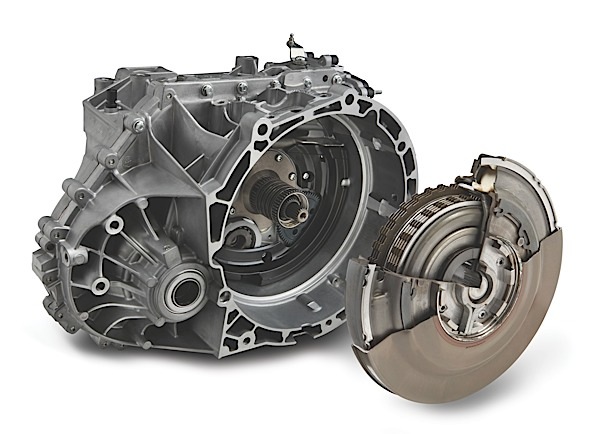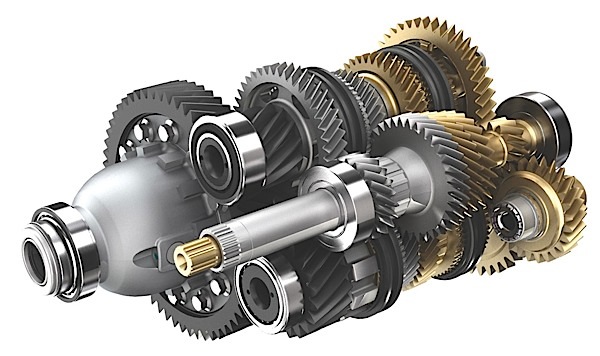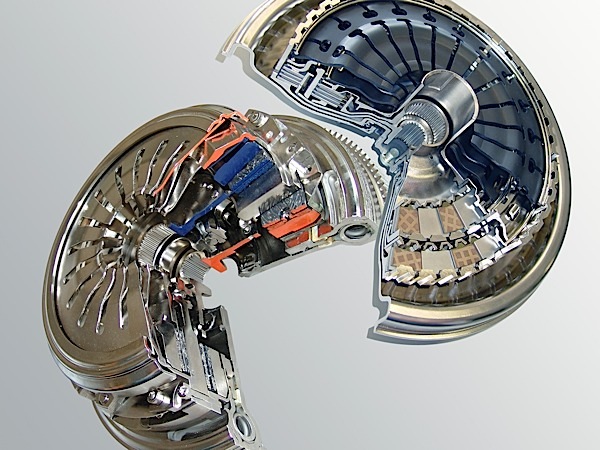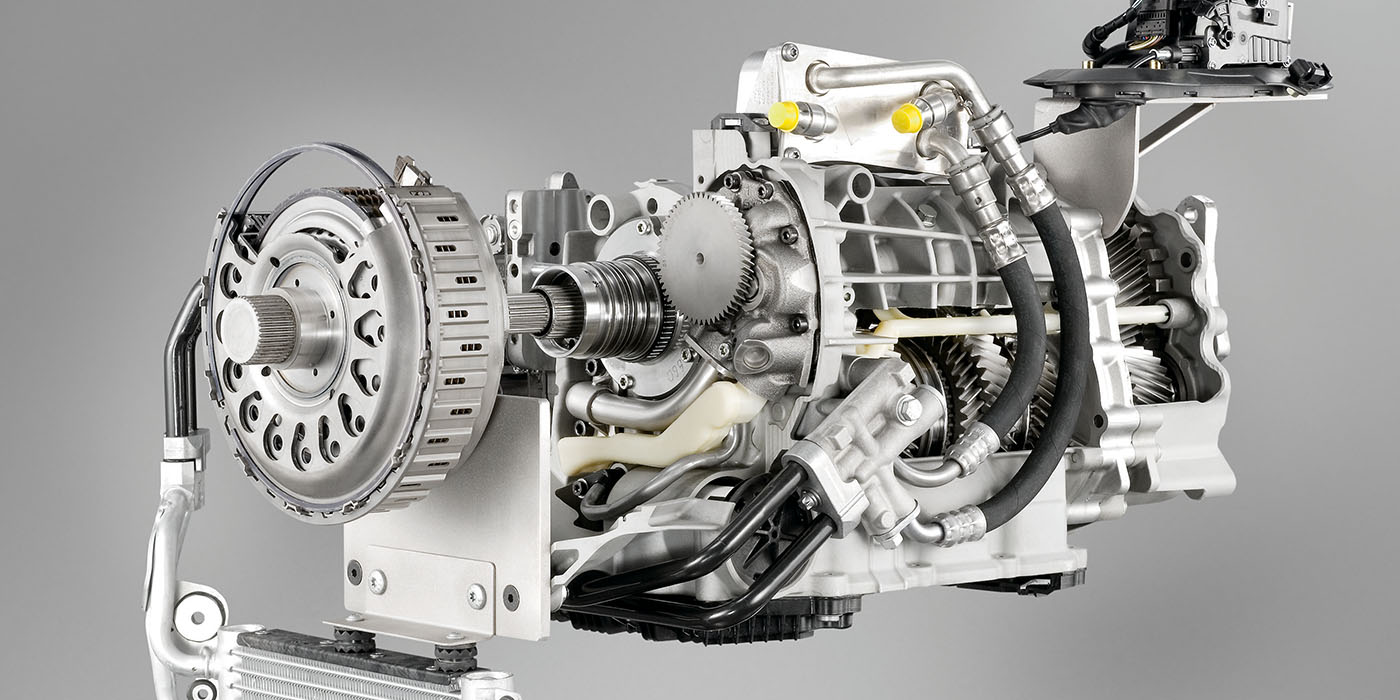
Dual-clutch transmissions are coming to your shop in the near future. They started gaining popularity in high-performance vehicles like the BMW M3, Audi TT and Nissan Skyline. But, the first dual-clutch transmissions you will likely see will be on compact cars, hybrids and even trucks. They are out there and the warranty period is ticking away.
Most of the drivers who will own these vehicles will not know they have a dual-clutch transmission connected to the engine. Most of them will think they have an automatic that gets great gas mileage.
A dual-clutch transmission is more than just two clutch plates where there was just one. The two clutches are not connected. The clutches power shafts with one nested inside the other. These input shafts connect to what could be called counter shafts that run parallel to each other. One shaft can have the odd numbered gears while the other has the even gears. Some manufacturers call each shaft “sub transmissions.” The shafts connect to the output shaft.
EVERYDAY VEHICLES WITH DUAL-CLUTCH TRANSMISSIONS AS OPTIONAL OR STANDARD
• Dodge Dart and Journey
• Ford Fiesta and Focus
• Hyundai Veloster
• Mitsubishi Lancer Evolution
• Volkswagen Golf, Tiguan,
Beetle, EOS and Jetta
• Volvo V40, V60 and V70
Through sleeves, clutches and synchronizers typically found in manual transmissions, the gears are engaged. While one gear on a shaft is driving the wheels, the next anticipated gear is engaged and readied on the opposite shaft while its clutch is disengaged.

Instead of a linkage connected to a shifter in the cabin, the shift forks are actuated by hydraulic or electric solenoids. The actual shifting is done by opening one clutch and closing the other and maintaining the power flow at any time. The shifting behavior can be fine-tuned by software allowing very different characteristics using the same transmission.
It can act like a normal automatic transmission, or the driver can shift it like a normal manual with button mounted behind the steering wheel or shifter.
There are two types of dual-clutch transmission clutches — wet and dry. Wet clutches are used on high-output engines so the oil can cool the plates. Dry clutches are typically found on lower output engines. Most clutches that are making their way to market have diaphragm-style pressure plates regardless if they are wet or dry. The clutches can be engaged hydraulically or electrically.
Why Dual-Clutch?
The performance advantage of a dual-clutch transmission is the transmission and engine can always be connected to the wheels. There is no lag during a gear change as a clutch is disengaged and a gear is selected. Compared to conventional transmissions, one manufacturer claims a 5–10% reduction in fuel consumption from just this one feature.
The number one reason OEMs are adopting this technology is efficiency.
A dual-clutch transmission is lighter than a comparable automatic with the same number of speeds. Less weight equals better fuel efficiency.
Internally, the dual-clutch transmission is more efficient than an automatic because there are fewer moving parts. Also, with an automatic transmission the engine has to drive a pump and some energy is lost in the torque converter and clutch packs.
Another advantage is that fuel saving features like stop-start and sail (free-wheeling) are just a matter of software, not hardware.
Service Opportunities

Dual-clutch transmissions have clutches that wear and will eventually need replacement. Most units coming to market feature the clutches packaged together as a complete unit. The serviceability of these units has yet to be explored.
Some dual-clutch transmissions have valve bodies that are mounted in the pan or in the case. Some transmission manufacturers call this the “mechatronic” part of the transmission. These valve bodies are not too much unlike current automatic transmission valve bodies. This is a considerable service opportunity. The actuators that move the shift forks are also prone to failure.
Fluid maintenance is also key in keeping a dual-clutch transmission operating as designed. Most current dual-clutch transmissions hold 4 to 9 liters of fluid. Some of these, like the BMW M3 dual-clutch transmission, also have a filter.
The Ford Fiesta has a 150,000 mile service recommendation for normal conditions. Volkswagen also recommends a 150,000 service interval, but recommends 30,000 miles if the vehicle is used for towing. Some manufacturers say that the fluid will last the life of the transmission, which is code for “until the warranty runs out. “
The primary service opportunity for these transmissions will be diagnostic time.













